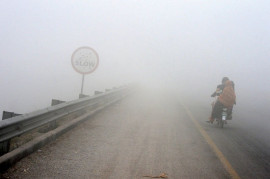
Wapda will attempt to increase the storage capacity of Tarbela Dam by clearing the reservoir of silt amd sedimentation.
Official sources in the Water and Power Development Authority (Wapda) said that the World Bank had pledged US$3million for a feasibility study and the subsequent project.
According to official documents, the usable storage capacity at the time of Tarbela’s commissioning was 9.68 million-acre feet (MAF), which has now reduced to 6.77 MAF due to sedimentation and is continuously on the decline.
The feasibility study will be conducted by two multinational companies, Mott Macdonald Pvt Limited Pakistan and HR Walling Ford. They will determine the area of the lake to be cleansed and the total expenditure on the project.
The companies will start work on the project in the second week of June this year as the letter of approval from General Manager Tarbela dam has just been issued. The officials said the project will be completed in the next fifteen months. The final report will be submitted to Wapda and the World Bank.
“Although it looks practically unfeasible to cleanse the thousand feet deep reservoir of silt, we hope to use advanced technology for this purpose as we are committed to increasing the life of the dam,” an official privy to the contract said.
Sources revealed Wapda had conducted five feasibility studies in the recent past. However, the plan was shelved due to unknown reasons. But the alarming increase in sedimentation had created a delta in the main dam close to the powerhouse, which requires immediate attention. That coupled with the power crisis got Wapda thinking again about clearing sedimentation from the dam.
The size of the delta, according to Wapda’s recent annual report, was 50 miles long, 1 to 2 miles wide and 200 feet deep. The Wapda authorities have attributed the sedimentation in the reservoir to unchecked deforestation in the catchment area of River Indus.
The dam was built with a cost of $3 billion displacing a vast population of over 120 villages and small localities of district Haripur during 1968-1974. Initially built for irrigation purpose, Tarbela Dam also serves as the biggest source of hydel power generation in the country.
The powerhouse consists of 14 power-generating units and was completed in three phases from 1977 to 1992-93 at a total cost of Rs16 billion.
Its total generation capacity is 3,478 megawatts. Construction of another power house at tunnel No 4 is about to start next year. It would add 960 megawatts to the existing power generation in the national distribution system.
Published in The Express Tribune, May 29th, 2011.


1734780406-0/Untitled-(11)1734780406-0-165x106.webp)
1734778885-0/Untitled-(10)1734778885-0-165x106.webp)
1734776708-0/Untitled-(8)1734776708-0-165x106.webp)










1734587529-0/Express-Tribune-(1)1734587529-0-270x192.webp)







COMMENTS
Comments are moderated and generally will be posted if they are on-topic and not abusive.
For more information, please see our Comments FAQ